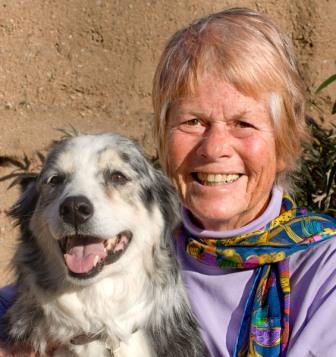
How to rescue the rescuers
Today I walked through the kennels at Animal Humane New Mexico looking at the friendly faces and wagging tails. I looked at the card on the door, which tells where each came from—“owner surrender,” “stray,” or “other shelter.” Quite a few were in this last category. Albuquerque, Valencia County, Socorro, Roswell, Española were a few of the names I was happy to read under “other shelter.”
I had just enjoyed meeting Sam Blankenship, director of adoptions, and hearing his enthusiasm for Project Fetch, a two-year-old program that brings shelter dogs from around the state to Albuquerque, where there are more adopters. Having added “New Mexico” to their name, Animal Humane wants to help NM animals.
Blankenship explained that they are willing to work with all shelters that follow certain guidelines, such as health and behavior standards. They rotate through the list of shelters, trying to take about ten dogs and some cats from two shelters a week if possible. Animal Humane is currently taking in about 100 dogs a month as transfers, and the number is growing.
This is possible because of many projects and new approaches to adopting out animals. For example, most of the 24 adoption staff members work with two dogs at a time, giving them a regular schedule of walks and activities. Ice Cube, a small, very friendly, mixed-breed brown dog from Roswell, was in Sam’s office. While Sam and I talked, Ice Cube rotated between his lap and mine. He would then go back to his kennel and Sam would fetch his afternoon dog.
EPA is another project geared to increasing the number of adoptable dogs. EPA means Extra Push Animals, referring to those at risk from being sheltered too long or not doing well in the kennel environment. Often this means the dogs get extra exercise. We all know that tired dogs are happy dogs. The staff meets regularly to discuss the dogs and strategies to help them.
Animal Humane also offers counseling to owners who are considering giving up their dogs. Helping people resolve their dog problems means fewer dogs coming into the system.
All of this—a dedicated staff and volunteers, exciting programs and new ideas, community support—results in a shelter that is able to help more animals in our state.
I am especially interested in their work because helping shelters around the state has been a special interest of mine. When I founded Bro & Tracy Animal Welfare, our goals were not only to help individual animals but also to help other rescues. We work closely with the McKinley County Humane Society in Gallup. Sena Fitzpatrick, an extremely dedicated volunteer, is a friend and co-worker, so I see how many wonderful dogs she meets there and how few she can save. We can take only one or two of these dogs at a time. Animal Humane will take ten. Sam told me they expect to get some Gallup dogs next week. Yay!
Walking through their kennels today brought back many memories. Those kennels were built around 1990, when I first started photographing shelter animals. In 2001 when I first saw my dear Happy there, the wire still went to the floor, and when I saw her insanely trying to herd the dogs next door, I never imagined how much I would come to love this dog. The new kennels will be more square and homelike. What a difference such things make! It was pretty hectic there today because the entire campus is under construction. I am eager to see the results. Ribbon-cutting is scheduled for early June. Congratulations to Animal Humane!
Photographer Joyce Fay founded Bro & Tracy Animal Welfare in 2000, a nonprofit organization dedicated to helping individual animals find the right homes. The intention of this column is to share some of those stories.
